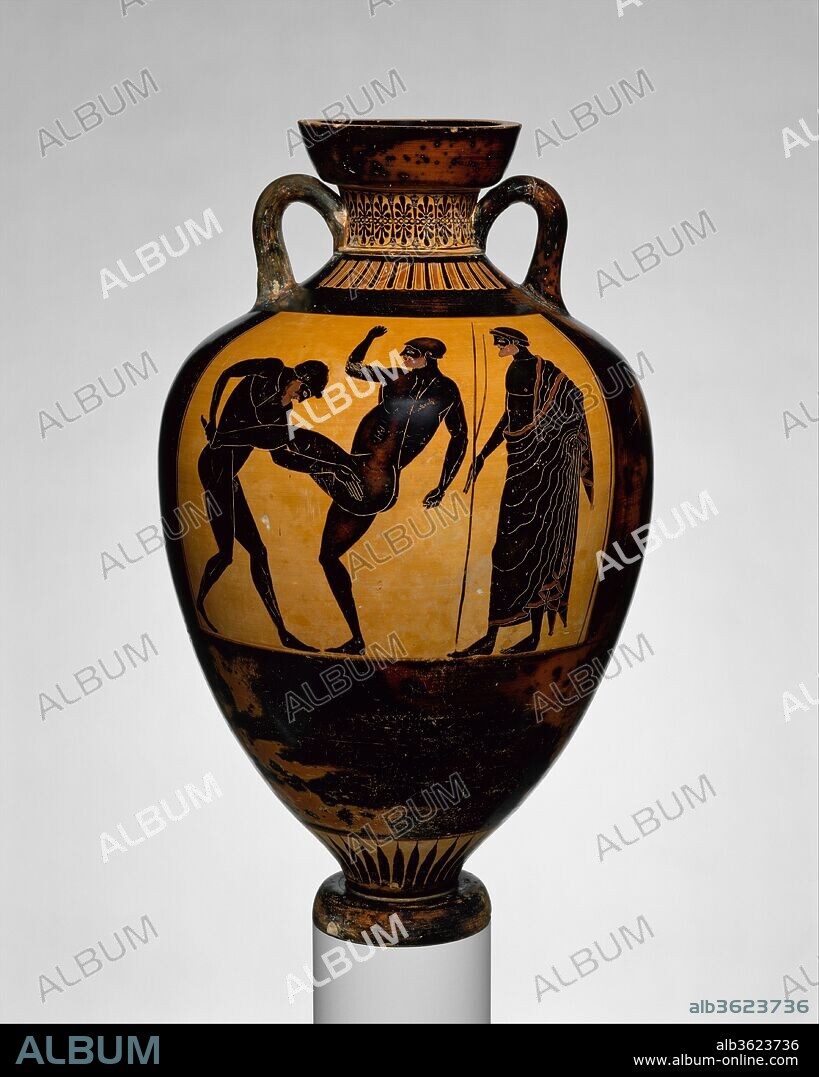alb3623736
Terracotta Panathenaic prize amphora

|
Añadir a otro lightbox |
|
Añadir a otro lightbox |



¿Ya tienes cuenta? Iniciar sesión
¿No tienes cuenta? Regístrate
Compra esta imagen.
Selecciona el uso:

Título:
Terracotta Panathenaic prize amphora
Descripción:
Traducción automática: Ánfora del premio Panatenaico de terracota. Cultura: Griego, ático. Dimensiones: Alto: 25 pulg. (63,5 cm). Fecha: ca. 500 AC. Anverso, Atenea Reverso, pancracio (competición atlética) y juez Después de mediados del siglo VI a. C., las firmas de los artistas no aparecen en las ánforas de los premios Panatenaicos. Parece, sin embargo, que ciertos artistas utilizaron sus propios dispositivos de protección de "marcas registradas". El pintor Cleófrades favorecía a Pegasos, el caballo alado. El reverso de este jarrón representa el pancracio, que combinaba lucha, boxeo y patadas. La inclusión del juez puede resaltar el peligro particular del evento para los competidores.
Terracotta Panathenaic prize amphora. Culture: Greek, Attic. Dimensions: H: 25 in. (63.5 cm). Date: ca. 500 B.C..
Obverse, Athena
Reverse, pankration (athletic contest) and judge
After the mid-sixth century B.C., artists' signatures do not appear on Panathenaic prize amphorae. It seems, however, that certain artists used their own "trademark" shield devices. The Kleophrades Painter favored Pegasos, the winged horse. The reverse of this vase depicts the pankration, which combined wrestling, boxing, and kicking. The inclusion of the judge may highlight the particular danger of the event to the competitors.
Técnica/material:
Terracotta; black-figure
Periodo:
ARCHAIC
Museo:
Metropolitan Museum of Art, New York, USA
Crédito:
Album
Autorizaciones:
Tamaño imagen:
3276 x 4094 px | 38.4 MB
Tamaño impresión:
27.7 x 34.7 cm | 10.9 x 13.6 in (300 dpi)
Palabras clave:


 Pinterest
Pinterest Twitter
Twitter Facebook
Facebook Copiar enlace
Copiar enlace Email
Email
